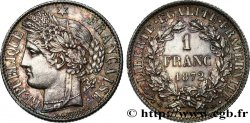E-auction 348-262337 - fme_563350 - TERZA REPUBBLICA FRANCESE Médaille de pêche offerte par le St. Raphael Quinquina
Devi Sign-in ed essere un offerente approvato fare un'offerta, Login per fare offerte. Conti sono soggetti ad approvazione e di approvazione sono raggiunti entro 48 ore. Non aspettare fino al giorno di una vendita si chiude per registrarti.Confermando la tua offerta su questo oggetto ti impegni ad un contratto legalmente vincolante per l'acquisto di questo prodotto e fare clic su «offerta» costituisce accettazione dei termini di utilizzo de e-auctions cgb.fr.
Offerta deve essere collocato in euro gli importi interi vendita only.The si chiuderà al momento sulla descrizione dell'oggetto, eventuali offerte pervenute al sito dopo l'orario di chiusura non verranno eseguite. Volte transmition possono variare e le offerte potrebbero essere respinto se si attende per gli ultimi secondi. Per ulteriori informazioni ckeck le FAQ.
SENZA COSTI PER GLI ACQUIRENTI.
SENZA COSTI PER GLI ACQUIRENTI.
| Valutazione : | 45 € |
| Prezzo : | 21 € |
| Offerta maxima : | 21 € |
| Data di fine vendita : | 16 dicembre 2019 18:23:30 |
| partecipanti : | 4 partecipanti |
Tipo : Médaille de pêche offerte par le St. Raphael Quinquina
Data: n.d.
Nome della officina / città: 83 - Saint-Raphaël
Metallo : bronzo
Diametro : 49,5 mm
Asse di coniazione : 12 h.
Incisore FRAISSE Édouard (1880-1945)
Peso : 56,62 g.
Orlo : lisse + BRONZE triangle
Marchio : Triangle BRONZE
Commenti sullo stato di conservazione:
Patine hétérogène. Taches noires sur l’avers. Petites marques d’usure sur les hauts reliefs
Diritto
Titolatura diritto : ANÉPIGRAPHE.
Descrittivo diritto : Scène de pêche : quatre pêcheurs dans un paysage bocager. Signé : GRUN.
Rovescio
Titolatura rovescio : OFFERT PAR LE / ST. RAPHAEL QUINQUINA.
Descrittivo rovescio : Homme debout, de face, tenant une coupe de la main droite et la bouteille, qu’un serveur porte, de la main gauche. Signé : CONTAUX.
Commento
La médaille est offerte par la société St. Raphael Quinquina. Le Saint-Raphaël est un apéritif à base de mélange de mistelle et de plantes aromatiques. Deux variétés existent : le Saint-Raphaël Rouge et le Saint-Raphaël Ambré-Doré.
En 1830, le docteur Juppet travaillait la nuit à l'élaboration d'un apéritif à base de quinquina. Sa vue baissant, il en appela à l'archange Raphaël qui avait rendu la vue à Tobie. Une autre version de l'histoire attribuerait l'invention de l'apéritif à une date inconnue à Antonin Soupe, pharmacien à Paris, né en 1844 soit quatorze ans après l'invention théorique du breuvage. Distribué rapidement sur l'ensemble du territoire français puis européen, le Saint-Raphaël traversa l'Atlantique. La maison Saint-Raphaël mit rapidement en œuvre des techniques marketing pour accroître sa notoriété, comme la mise en place d'une montgolfière géante aux couleurs de la marque pour l'exposition universelle de Paris en 1900 pilotée par l'aéronaute Léon Lair. Vendue en pharmacie comme fortifiant, la marque a longtemps mis en avant les vertus excitantes du quinquina. Les publicités étaient pendant longtemps illustrées par deux personnages appelés les « jumeaux », l'un de couleur rouge, l'autre blanc pour symboliser les deux variétés du Saint-Raphaël. À l'exportation, vers les colonies ou l'Amérique, la marque prit le qualificatif d'Apéritif de France. Aujourd'hui tombé en désuétude en France, il est très présent et apprécié au Québec. Propriété de la marque Bacardi-Martini, il a été racheté par l'entreprise Boisset, elle-même reprise par le groupe La Martiniquaise en 2009..
The medal is offered by the St.. Raphael Quinquina. Saint-Raphaël is an aperitif made from a mixture of mistelle and aromatic plants. There are two varieties: Saint-Raphaël Rouge and Saint-Raphaël Ambré-Doré..
In 1830, Doctor Juppet worked at night developing a quinine-based aperitif.. His eyesight failing, he called upon the archangel Raphael who had restored Tobit's sight. Another version of the story attributes the invention of the aperitif to an unknown date, Antonin Soupe, a pharmacist in Paris, born in 1844, fourteen years after the theoretical invention of the beverage.. Rapidly distributed throughout France and then Europe, the Saint-Raphaël crossed the Atlantic. The Saint-Raphaël house quickly implemented marketing techniques to increase its notoriety, such as the installation of a giant hot air balloon in the brand's colors for the Paris World's Fair in 1900 piloted by the aeronaut Léon Lair.. Sold in pharmacies as a tonic, the brand has long highlighted the exciting virtues of quinine. Advertisements were for a long time illustrated by two characters called the \\\"twins\\\", one red, the other white to symbolize the two varieties of Saint-Raphaël.. When exported to the colonies or America, the brand took the name Apéritif de France.. Now fallen into disuse in France, it is very present and appreciated in Quebec. Owned by the Bacardi-Martini brand, it was bought by the Boisset company, which was itself taken over by the La Martiniquaise group in 2009..
En 1830, le docteur Juppet travaillait la nuit à l'élaboration d'un apéritif à base de quinquina. Sa vue baissant, il en appela à l'archange Raphaël qui avait rendu la vue à Tobie. Une autre version de l'histoire attribuerait l'invention de l'apéritif à une date inconnue à Antonin Soupe, pharmacien à Paris, né en 1844 soit quatorze ans après l'invention théorique du breuvage. Distribué rapidement sur l'ensemble du territoire français puis européen, le Saint-Raphaël traversa l'Atlantique. La maison Saint-Raphaël mit rapidement en œuvre des techniques marketing pour accroître sa notoriété, comme la mise en place d'une montgolfière géante aux couleurs de la marque pour l'exposition universelle de Paris en 1900 pilotée par l'aéronaute Léon Lair. Vendue en pharmacie comme fortifiant, la marque a longtemps mis en avant les vertus excitantes du quinquina. Les publicités étaient pendant longtemps illustrées par deux personnages appelés les « jumeaux », l'un de couleur rouge, l'autre blanc pour symboliser les deux variétés du Saint-Raphaël. À l'exportation, vers les colonies ou l'Amérique, la marque prit le qualificatif d'Apéritif de France. Aujourd'hui tombé en désuétude en France, il est très présent et apprécié au Québec. Propriété de la marque Bacardi-Martini, il a été racheté par l'entreprise Boisset, elle-même reprise par le groupe La Martiniquaise en 2009..
The medal is offered by the St.. Raphael Quinquina. Saint-Raphaël is an aperitif made from a mixture of mistelle and aromatic plants. There are two varieties: Saint-Raphaël Rouge and Saint-Raphaël Ambré-Doré..
In 1830, Doctor Juppet worked at night developing a quinine-based aperitif.. His eyesight failing, he called upon the archangel Raphael who had restored Tobit's sight. Another version of the story attributes the invention of the aperitif to an unknown date, Antonin Soupe, a pharmacist in Paris, born in 1844, fourteen years after the theoretical invention of the beverage.. Rapidly distributed throughout France and then Europe, the Saint-Raphaël crossed the Atlantic. The Saint-Raphaël house quickly implemented marketing techniques to increase its notoriety, such as the installation of a giant hot air balloon in the brand's colors for the Paris World's Fair in 1900 piloted by the aeronaut Léon Lair.. Sold in pharmacies as a tonic, the brand has long highlighted the exciting virtues of quinine. Advertisements were for a long time illustrated by two characters called the \\\"twins\\\", one red, the other white to symbolize the two varieties of Saint-Raphaël.. When exported to the colonies or America, the brand took the name Apéritif de France.. Now fallen into disuse in France, it is very present and appreciated in Quebec. Owned by the Bacardi-Martini brand, it was bought by the Boisset company, which was itself taken over by the La Martiniquaise group in 2009..








 Segnalare un errore
Segnalare un errore Stampate la pagina
Stampate la pagina Condividi mia selezione
Condividi mia selezione Fai una domanda
Fai una domanda Consegnare / vendere
Consegnare / vendere
 Descrittivo
Descrittivo














